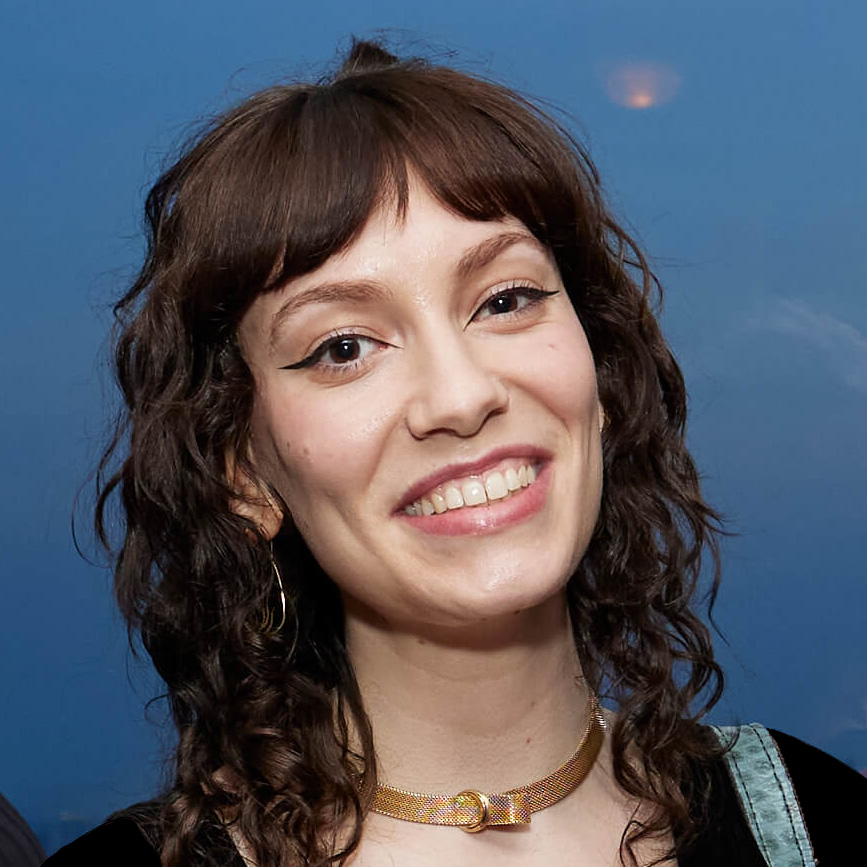News May 2025

Cecelia Halle, DOCOMOMO US/New York Tri-State grantee, Reflects on the Experience
Cecelia Halle was awarded the DOCOMOMO US/New York Tri-State Student and Emerging Professional Grant to attend the 2025 Preserving the Recent Past (PRP) Conference in Boston, MA.
On Paul Rudolph and Counternarrating the Recent Past–Since beginning my coursework as a graduate student of historic preservation, returning home to Boston has often resulted in extended and sometimes renewed fascinations with the rich social worlds and lifeways held within the buildings and the neighborhood landscape I know so well. Getting on the 1 bus as I made my way to the Boston Architectural College, I walked across the Boylston Street overpass that crosses the Mass Pike. Looking west, I paused to admire the exterior staircase on the Dalton Street garage, reflecting on my enjoyment of the varied forms of parking garages that, one year prior, had brought me to New Haven to gaze upon Paul Rudolph’s TempleStreet Garage. Yet that morning, I would be experiencing Rudolph in a different light.
I arrived at Cascieri Hall shortly before the first History and Context presentation session on “What’s Next for Boston Brutalism?” As I settled into my chair, Timothy Rohan spoke about the enduring legacy of Rudolph’s Government Service Center, now the Lindemann Mental Health Center, ostensibly preserved through neglect and indifference towards it. The building is striking both for its proportions (massive) and its undulating features: concrete cylinders that punctuate the facade, a magnificent rotating brush-hammered staircase, and, in bygone years, wave-formed benches set outside the building (now home to a parking lot). Yet, what I found truly compelling was Rohan’s accounts of those who resided in the Lindemann Center: the apparent feelings of safety and comfort the heft of the Lindemann Center provided to its occupants, those receiving residential mental health treatment, seemingly reported by staff members.
As the discussion moved forward to proposals to redevelop the site to include housing, updated facilities for mental health services, and the Lindemann Center to be preserved and perhaps opened to the public, I found myself returning to the experiences of its residents Rohan described. If the site is preserved and reopened to the public, how will the building’s history be interpreted? How will the stories of those for whom the building served as a space of care, refuge, or even a space of difficulty or pain, be understood as part of the history of this noteworthy modernist building? Along these lines, Rohan’s observation entered into an essential line of inquiry about the potential to expand our justice-oriented approaches as preservationists. How do we reassert the lived histories of marginalized publics into established preservation or historical narratives?
In the case of the Lindemann Center, Rohan’s intervention expands beyond Rudolph’s conceptualization of progressive design for mental health to consider one, the actual lived
experiences of those who regularly spent time in the space, and two, how the design of the space affected these experiences. Here, we begin to see the formation of a multivalent counternarrative of the (architectural) history of Rudolph’s building, forged from the stories of those who resided there. Indeed, it is these sorts of inquiries that underpin my developing practice as a preservationist and that are essential to framing how we approach preserving the recent past.
Cecelia Halle is a second-year graduate student in Historic Preservation at Columbia University who has undertaken several student projects focused on midcentury modern and currently serves on the ICOMOS International Scientific Committee on the Preservation of 20th Century Heritage.